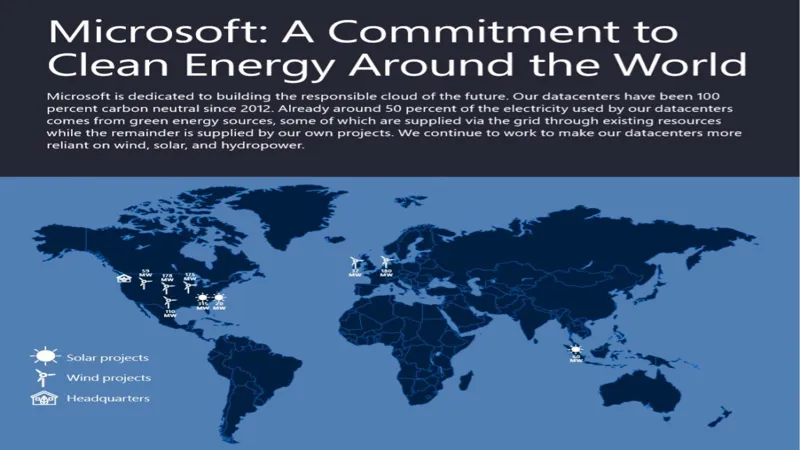
Microsoft Renewable Energy: Power for AI Ambitions
As the demand for artificial intelligence and cloud computing surges, Microsoft is making significant strides in renewable energy to power its ambitious projects sustainably. Recently, the tech giant added 389 megawatts of renewable power to its energy portfolio through three solar initiatives in Illinois and Texas, developed by EDP Renewables North America. This strategic move not only enhances Microsoft’s energy supply for its operations but also reinforces its commitment to becoming carbon negative by 2030. In an era where environmental responsibility is paramount, Microsoft’s latest renewable energy initiatives highlight the critical intersection of technology, sustainability, and innovation.
| Category | Details |
|---|---|
| Renewable Power Added | 389 megawatts |
| Projects Involved | 3 solar projects in total |
| Project Locations | 2 in southern Illinois, 1 near Austin, Texas |
| Total Renewable Energy Capacity | Nearly 20 gigawatts |
| Contribution of Latest Purchase | Around 2% of total capacity |
| Purpose of Renewable Energy | Support cloud and AI operations |
| Advantages of Renewable Energy | Quick and economical deployment |
| Solar Farm Production Speed | Can start producing energy in as little as 18 months |
| Hybrid Installations | Combine solar and wind sources with batteries |
| Microsoft’s Carbon Commitment | Become carbon negative by 2030 |
| Methods for Carbon Removal | Direct air capture, enhanced rock weathering, reforestation |
| Recent Carbon Credit Purchase | Over 7 million tons to offset half of 2023 emissions |
Microsoft’s Commitment to Renewable Energy
Microsoft is making a big effort to use more renewable energy, which comes from natural sources like the sun and wind. Recently, they added 389 megawatts of renewable power to their energy supply. This means they are working hard to have enough electricity to support their exciting projects in artificial intelligence (AI). The company is not just thinking about today; they are planning for a cleaner, greener future for everyone.
With this new renewable power, Microsoft is using energy from three solar projects in Illinois and Texas. By buying energy credits, they can ensure that their operations run smoothly while helping the planet. Their goal is to use nearly 20 gigawatts of renewable energy by 2024! This commitment shows how important it is for big companies like Microsoft to take action against climate change.
Frequently Asked Questions
What recent renewable energy addition did Microsoft make?
Microsoft added 389 megawatts of renewable power, primarily from solar projects in Illinois and Texas, to support its growing AI and cloud operations.
How much renewable energy does Microsoft currently contract?
Microsoft contracts nearly 20 gigawatts of renewable energy capacity as part of its sustainability efforts.
Why is Microsoft investing in renewable energy?
Microsoft invests in renewable energy to meet power demands, reduce pollution, and support its goal of becoming carbon negative by 2030.
What types of renewable energy projects is Microsoft involved in?
Microsoft is involved in solar and wind projects, often using hybrid installations with batteries for continuous power supply.
What is the timeline for solar energy deployment compared to gas plants?
Solar farms can start producing energy in as little as 18 months, while gas power plants may take years to build.
How is Microsoft working to achieve negative carbon emissions?
To achieve negative carbon emissions, Microsoft focuses on carbon removal methods like direct air capture and reforestation.
What recent carbon credit deal did Microsoft announce?
Microsoft announced a deal to purchase over 7 million tons of carbon credits, helping offset half of its emissions for 2023.
Summary
Microsoft has recently added 389 megawatts of renewable energy to support its growing AI and cloud services. This energy comes from three solar projects in Illinois and Texas, contributing about 2% to its total 20 gigawatts of renewable capacity. The company is focused on quickly deploying renewable sources like solar and wind, which are faster and more economical than traditional gas plants. Microsoft aims to become carbon negative by 2030, investing in carbon removal techniques and purchasing carbon credits to offset emissions. These efforts highlight Microsoft’s commitment to sustainability and reducing pollution.